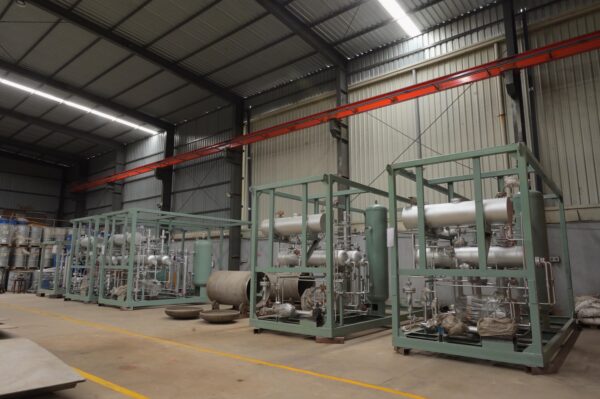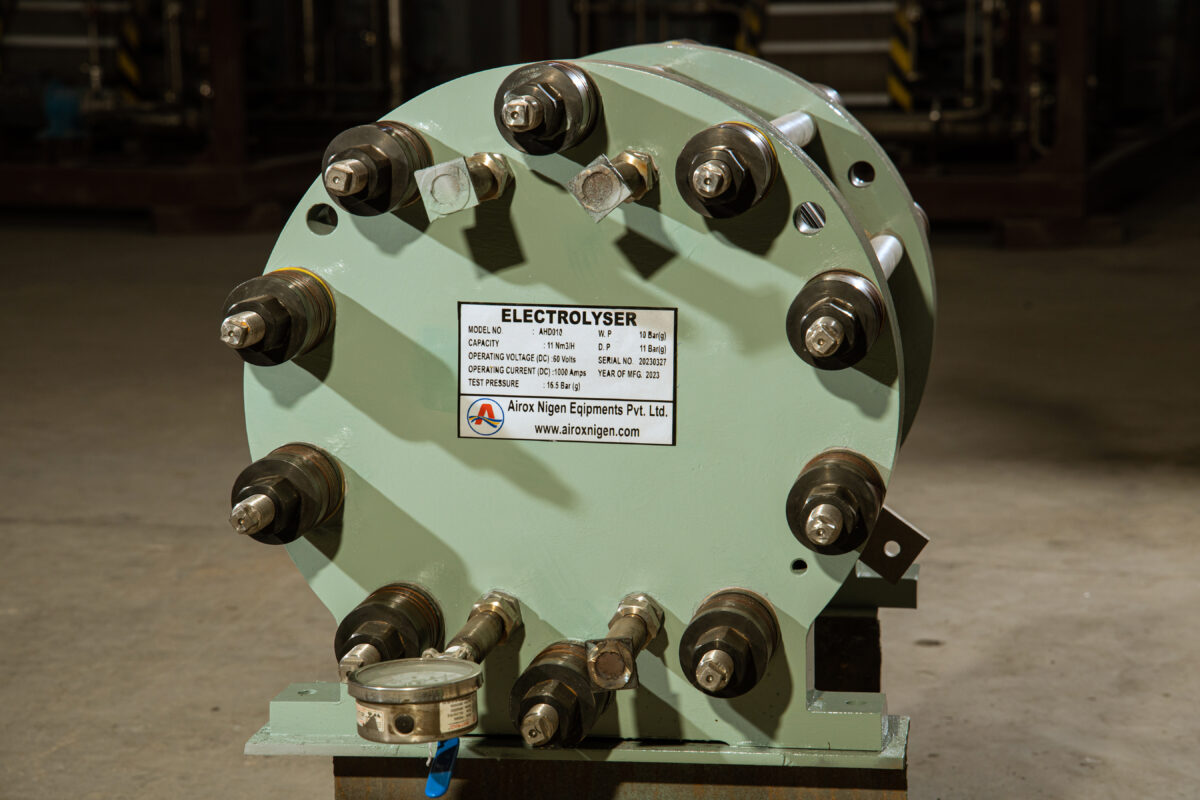pv magazine: Airox Nigen has been present in the hydrogen segment for quite a long time. What are your offerings in this space?
Anil K Agrawal: We are a 30-year-old company with presence in hydrogen equipment manufacturing for 25 years. Our product range includes hydrogen generation units, hydrogen compressors, hydrogen refueling stations, hydrogen fuel cells and hydrogen storage vessels. In addition, we deliver EPC services with end-to-end management for hydrogen generation plants.
We have executed more than 80 hydrogen generation plants across India, becoming the first company in the country to achieve this milestone.
How are you positioned to tap the green hydrogen opportunity?
The concept of green hydrogen has picked up only in the past two-three years. And currently, 95-98% of hydrogen electrolyzer production is concentrated in China. Elsewhere, Teledyne in USA and Hydrogenics Europe develop hydrogen electrolyzers. Cummins bought Hydrogenics Europe few years back to take initial lead in the market. However, it’s not making alkaline electrolyzers anymore and has adopted proton exchange membrane (PEM) technology.
To meet its green hydrogen target of 5 million metric tonnes per annum by 2030, India will require 60-100 GW electrolyzer capacity per annum and 125 GW renewable energy capacity. Currently, the global commercial electrolyzer manufacturing capacity is estimated to be only about 2-4 GW/annum in spite of tall claims worldwide.
This capacity-crunch challenge is an opportunity for the Indian manufacturers to ramp up their facilities and help India become an electrolyzer market hub that caters to the domestic demand and exports to the global market.
We have been manufacturing alkaline electrolyzers on order basis. Currently, we have an electrolyzer production capacity of 500-600 MW per year. We are building a new alkaline electrolyzer factory in Haryana at an estimated cost of INR 200 crore. It will have a production capacity of 3-4 GW per year along with other hydrogen value chain products.
By when will your 3 GW electrolyzer factory start production?
500 MW production will start by September 2025. The complete 3 GW capacity will be operational in 2-2.5 years. The factory will produce electrolyzer units in sizes of 1-5 MW.
Do you plan upstream integration?
We aim to create the world’s largest integrated green hydrogen value chain facility. In Haryana, we have acquired 17 acres of land, out of which 3-4 acres will be used for our electrolyzer factory. The rest of the space will be utilized for setting up ancillary system production. We will be setting up a 150 MW PV panel manufacturing plant too at the same location, which we hope to commission by 2026.
As we celebrate 30th anniversary of Airox Nigen this month, we are unveiling our new arm Aspire Hydrogen, which will encompass the integrated green hydrogen value chain, including electrolyzers, balance-of-plant and process fabrication, hydrogen storage and dispensers, hydrogen fuel cells, and solar panels.
Aspire Hydrogen, led by Aniruddh Agrawal as chief executive officer, will be funded by Airox Nigen promoters. We plan to launch our initial public issue (IPO) by June 2025 to fund our 3 GW electrolyzer factory. We also invite investors to become part of our growth.
How do the different electrolysis technologies compare in adoption?
Alkaline electrolysis technology has been around for 120 years. PEM is 30-35 years old but hasn’t been consistent. Solid oxide electrolysis cell (SOEC) is still in R&D and not developed much. Anion exchange membrane (AEM) has been used to produce small-size electrolyzers. So for 1 MW hydrogen plant, you will need to set up 100 electrolyzer units of 10 kW.
Among all these options, alkaline is the most dependable technology. PEM electrolyzers cost three times more than alkaline units because these use noble metals like titanium and plutonium.

Airox Nigen
What are your key projects in hydrogen plant EPC?
The cost to set up a 5-10 ktpa green hydrogen plant is around INR 1,000 crore across equipment supply, land, EPC, cost of solar power, water and infrastructure, and operations.
We have installed projects for many PSUs. In the last two years, the government has released orders for nine pilot projects in green hydrogen, out of which six have been commissioned by us.
For instance, we set up India’s first green hydrogen demo units in Ujjain, Madhya Pradesh. The 100 kW plant can produce 20 Nm3 of hydrogen per hour.
With your new electrolyzer factory, what’s your strategy for the market?
We aim to emerge as the preferred supplier for electrolyzers. Right now, the cost of electrolyzers imported from China is INR 4 crore/MW. We plan to bring it down to INR 2-2.5 crore/MW. And we are ready to book order at this price.
We have been getting a lot of queries from European countries wherein companies are asking for our technologies and collaboration opportunities to start electrolyzer manufacturing in Europe. We are already in talks with companies in Italy and France.
This content is protected by copyright and may not be reused. If you want to cooperate with us and would like to reuse some of our content, please contact: editors@pv-magazine.com.









By submitting this form you agree to pv magazine using your data for the purposes of publishing your comment.
Your personal data will only be disclosed or otherwise transmitted to third parties for the purposes of spam filtering or if this is necessary for technical maintenance of the website. Any other transfer to third parties will not take place unless this is justified on the basis of applicable data protection regulations or if pv magazine is legally obliged to do so.
You may revoke this consent at any time with effect for the future, in which case your personal data will be deleted immediately. Otherwise, your data will be deleted if pv magazine has processed your request or the purpose of data storage is fulfilled.
Further information on data privacy can be found in our Data Protection Policy.